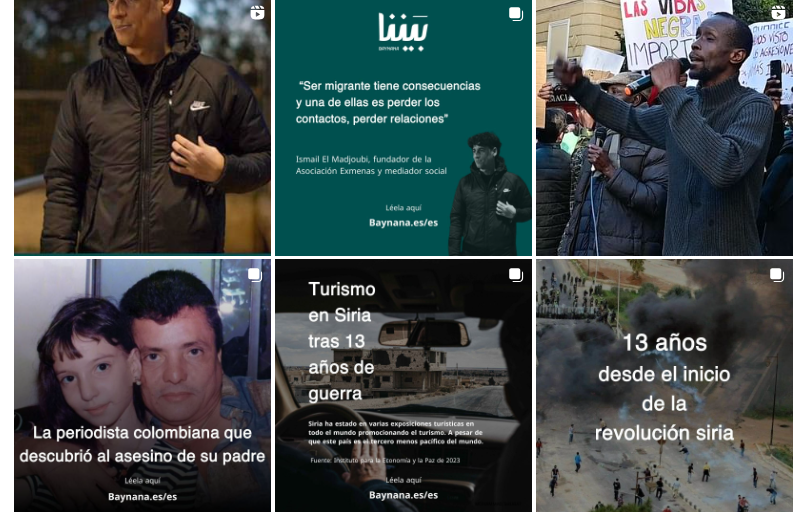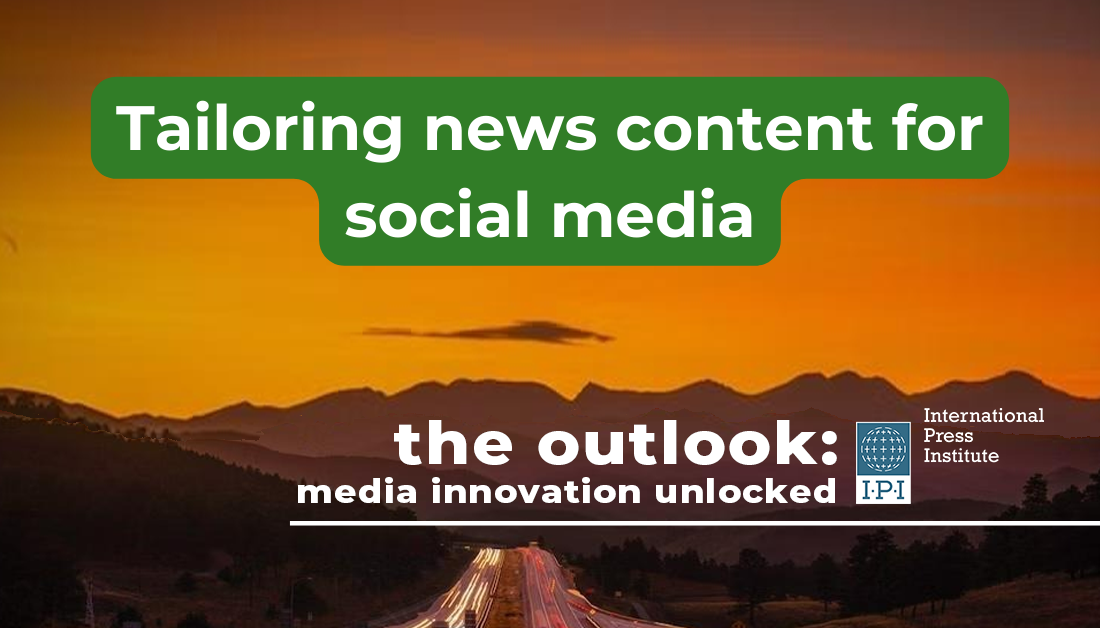This text comes from IPI’s newsletter The Outlook. Click here to sign up to receive future editions direct to your inbox.
This is The Outlook, IPI’s media innovation newsletter, where we take a look at strategies and tools for innovation and business development, and learn from newsrooms that are implementing them.
This week we introduce methods you can use to get started with a review of your news organization’s social media strategy and start creating content that meets your needs and those of your audience.
The challenge: Limited resources become stretched when each platform demands tailored content
Each social media platform might attract different demographics, uses different means of selecting which content users see, and have different requirements for multimedia formats (short videos, vertical videos, link usage etc.) – and these can change regularly. For small organizations, it’s a lot to keep track of.
One such organization is Baynana, a Spain-based news outlet, founded by Syrian journalists who write for the migrant community. They joined IPI’s New Media Incubator with the goal of reaching a greater audience and achieving financial sustainability.
Audience surveys and 1:1 interviews showed that their audience preferred consuming news on social media and in newsletters, so this was their focus for the incubator.
The solution: Don’t tailor content for platforms, tailor it for your audience on each platform
While there are general trends you can follow to adapt your content for each platform – image dimensions, caption or video length, formal or informal tone of voice – the most efficient way to get the most out of your social feeds is to understand specifically how your audience uses each platform.
In Baynana’s case, Instagram was one of the most popular platforms. It was worthwhile to devote time to making their profile a a space where users could be informed on all issues related to Spanish and EU migration policies, stories of migrants in Spain, and cultural events.
“We have learned that a strong team, even small, can do wonders in very little time,” the Baynana team said.
“The lessons learned from this [our exploration of how our audience used social media] are that nothing can be presumed.”
They initially assumed that their Arabic-speaking audience was present on Twitter/X and not Facebook, but found the opposite: the Arab audience was dominant on Facebook, while their Twitter/X content reached a valuable audience segment of NGOs and journalists, and proved to be an important driver of traffic.

This has influence not only over the languages they use on each platform, but also on the content. On Facebook, Baynana highlights news about what Spanish migration policy means for individuals, as well as stories of migrants and refugees which the audience on that platform could relate to.
Another lesson was that replicating the same content on Instagram Reels and TikTok was not effective. Content that worked well on Reels had far smaller reach and engagement on TikTok. Rather than continue replicating, Baynana made the strategic decision to focus on Reels until they have enough resources to give TikTok more attention.
These decisions can be different for every organization.
Romanian news outlet Gen, știri, an alumnus of IPI’s Transition Accelerator, focuses heavily on TikTok, a popular platform with their target audience of Gen Zs. Gen, știri also ensured that their goals for the platform align with their overall goal of increasing youth engagement with democracy in the country, so they focus on strategies to increase comments and engagement rather than merely aiming at increased reach.
💡The Takeaway: It’s not a question of ‘TikTok content’ or ‘Facebook content’; what you need to provide is content for your organization’s audience on each platform.
Succeeding at this can directly benefit your bottom line and overall business, not just followers and engagement growth on a certain platform. During the three-month incubator, Baynana’s main focus was improving the relevancy of their social content, but the team also increased the number of website visits by 15 percent.
News from IPI’s Media Sustainability Team
We’ll soon be sharing more stories from the brilliant teams in our New Media Incubator, so look out for these on the IPI website.
Meanwhile, the IPI team is busy preparing both for the International Journalism Festival in Perugia this month, and for the IPI World Congress and Media Innovation Festival in Sarajevo in May. There’s still time to register for the Congress and Media Innovation Festival and join discussions and panels on topics like innovation and crisis management, strategies for funding your journalism, the intersection of trust-building and technology and much more – explore the full programme online.
Funding opportunities for media
- If you want to improve your tech skills, articulate news product strategy, and incorporate tested product methodologies, apply to the News Product Management Certification programme run by our friends at the News Product Alliance and Craig Newmark Graduate School of Journalism at CUNY. The deadline is 2 May and the online training, aimed at mid- to senior-level news professionals, will cost $4,850, with a limited number of full and partial scholarships available for successful applicants.
- The Asia Journalism Fellowship, organized by the Temasek Foundation and the Institute of Policy Studies at the National University of Singapore, is open to journalists based in Asia with at least five years of professional experience. The deadline is 16 April and successful applicants need to be available to participate between 8 July to 30 August (four weeks online, four weeks in Singapore, with accommodation and expenses provided).
- Journalists based in West Africa can apply for FactCheckAfrica’s AI Journalism Fellowship which offers three months of training, exclusive resources and networking around AI to approximately 40 successful applicants. The deadline is 23 April.
- Code for Africa and the African Fact-Checking Alliance are offering a five-month fact-checking incubation programme for Somali news organizations, including support grants and wide-ranging support to establish fact-checking products. The deadline is 12 April.

